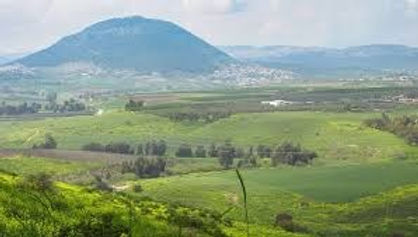Mount Tabor - Deborah and Barak

In the Book of Judges (Chapter 4), it is the site where Deborah, the prophetess and judge, commanded Barak to gather 10,000 men from the tribes of Naphtali and Zebulun to face the Canaanite general Sisera. From the slopes of Mount Tabor, this bold Israelite force descended to victory, aided by a sudden and intense rainstorm that turned the battlefield into a muddy trap. Sisera’s army, equipped with 900 iron chariots, seemed unbeatable on the open plains—but the heavy rainfall caused the nearby Kishon River to flood, bogging down the chariots in thick mud. The Israelite troops, charging down from Mount Tabor with the element of surprise and faith on their side, overcame a technologically superior force in one of the most dramatic underdog victories in the Bible. Interestingly, the area around Mount Tabor and the Jezreel Valley is still known today for short, sudden, and sometimes intense spring rainstorms. These brief but powerful bursts can quickly transform dry ground into swampy terrain—just as they did in the story of Sisera’s defeat. Beyond their historical echoes, these storms play a vital ecological role, nourishing the region’s wildflowers, oak woodlands, and unique biodiversity. Mount Tabor’s commanding height (575 meters) made it an ideal strategic location in ancient times. In later centuries, it continued to play a role in military and religious history—used by various armies and revered by multiple faiths. Today, it’s a peaceful forested site with a Franciscan monastery at the summit and breathtaking views in every direction. Whether you hike or drive to the top, Mount Tabor is an unforgettable place to reflect on courage, prophecy, and leadership.
Did You Know?
Mount Tabor is home to the Mount Tabor oak (Quercus ithaburensis), a tree species native to the eastern Mediterranean that once dominated the woodlands of northern Israel. During the Ottoman Empire, most of these majestic oaks were cut down to provide wood for railway construction and fuel for trains during World War I, dramatically altering the landscape. Thanks to modern reforestation efforts, the native oak woodlands are once again thriving on the slopes of Mount Tabor, restoring a living symbol of the region’s natural heritage.
Don’t Miss Out: Tabor Winery & Batzir 66 Bistro
Just a short drive from Mount Tabor, Tabor Winery in Kfar Tavor is a must-visit for anyone interested in local flavors and beautiful scenery. The winery is fully kosher and offers guided tours and tastings of their acclaimed wines. While you’re there, be sure to enjoy a meal at their on-site kosher bistro, Batzir 66, which serves delicious dishes made from fresh, local ingredients—perfect for unwinding after your adventure on the mountain.
